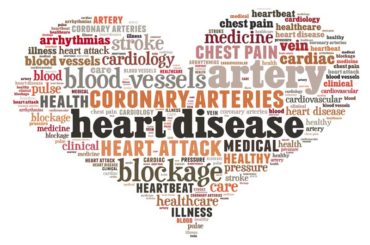Eating and drinking are important parts of most cultures and are a way we relate to each other, particularly within families. One of the most important ways we care for each other is through offering food and drink.
People who are in the last year of life often lose their appetite; food stops tasting good and they do not want to eat. Sometimes they can be tempted with favorite foods, or what we call “comfort foods.” But at some point, they simply will not be able to eat. This is hard on caregivers who want to provide nourishment, and who may feel that their loved one would live longer if only they would eat more.
When appetite begins to fail, you as the caregiver can and should offer a variety of foods. Talk to your loved one about what they think would taste good and let them know it is acceptable not to have a full meal. They may not want “usual foods” at “usual times.” Ask the doctor if there are any foods that should be avoided. For those who have been on restricted diets, ask the doctor if they can now have their favorite foods. Foods previously avoided for health reasons (e.g. foods high in cholesterol) may now be acceptable.
Offer small portions and do not force them to eat. Make sure water or other drinks are available and remind them to drink, as they may not feel thirsty. Remember that there are many ways to show you care that do not involve food and drink.
Sometimes, people with serious life-threatening illness will make a specific choice to stop eating or drinking; this is different from the natural decrease in appetite discussed above. If this happens, you will want to consult a physician, who may suggest counseling. It is important to be sure that any decisions made are well-considered and not the result of treatable depression or anxiety.
Tube feeding and intravenous or subcutaneous fluids
One difficult decision you may confront as a caregiver is whether to provide your loved one with artificial nutrition (tube feeding), or liquids delivered via needle into the bloodstream (intravenous or subcutaneous fluids.) Artificial nutrition and hydration may supplement or replace ordinary eating and drinking by giving a chemically balanced mix of nutrients and fluids through a tube placed directly into the stomach, the upper intestine, or a vein.
Short-term artificial nutrition and hydration can save lives in cases where a person has a curable illness or has suffered an accident and needs help to take in nutrition until the body heals.
The use of tube feeding has pros and cons, however, when used for people with end-stage conditions. Nutritional treatment may help to keep up energy levels if the person otherwise is feeling well or wants to be able to participate in a specific event—like a wedding or a holiday celebration. But nutritional treatment alone will not reverse the course of the disease. For individuals who have trouble swallowing, as often happens with Alzheimer’s disease or other dementias, tube feeding may increase the risk of pneumonia because the liquid food may unintentionally get into the lungs.
Similarly, artificial hydration has pros and cons. For people who cannot swallow or who cannot “keep anything down,” but have otherwise good organ function, intravenous delivery of fluids can be essential to maintaining the function of the brain and other critical organs. But for people whose organs are not functioning well, particularly those who are having heart, lung and/or kidney problems, delivery of intravenous liquids can put more strain on these organs, causing even more difficulty.
You may be worried that not eating or drinking would cause discomfort, but studies show that for persons in the final phase of illness, going without food and fluids is not painful. The fact is that people at the end of life who have stopped eating and drinking naturally, or by choice, do not complain of thirst or hunger. In fact, there is a side effect of going without food and fluids in which metabolism changes produce a mild sense of euphoria and calm.
For people who are not eating or drinking, it is standard care to apply moisture in some form to the lips and mouth regardless of whether or not the dying person is ever able to swallow again. You can use a moistened cloth or swab. In fact, application of moisture to the lips is comforting even for people who are able to drink fluids.
Some religious traditions require that people not be denied food and drink, so artificial nutrition and hydration may be important from a religious perspective for your loved one or for you. A decision to start or stop tube feeding or intravenous fluids should be discussed with your loved one whenever possible, so that their wishes can be expressed and honored. The decision should also be discussed with family and health care professionals so that you can be as comfortable as possible with the decision.
Copyright 2008 Hospice Foundation of America. All Rights Reserved.
Related items
What is Cholesterol?
Cholesterol is a waxy, fat-like substance that’s found in all cells of the body. Your body
Heart Disease is the #1 Killer in US
Cialis 5mg prix en pharmacie en france
Ne sous-estimez pas cet exercice d’échauffement, ta
5 Questions to Ask Your Doctor As a Senior
It’s easy and common to take the word of a doctor as the whole truth. However, doctors are






